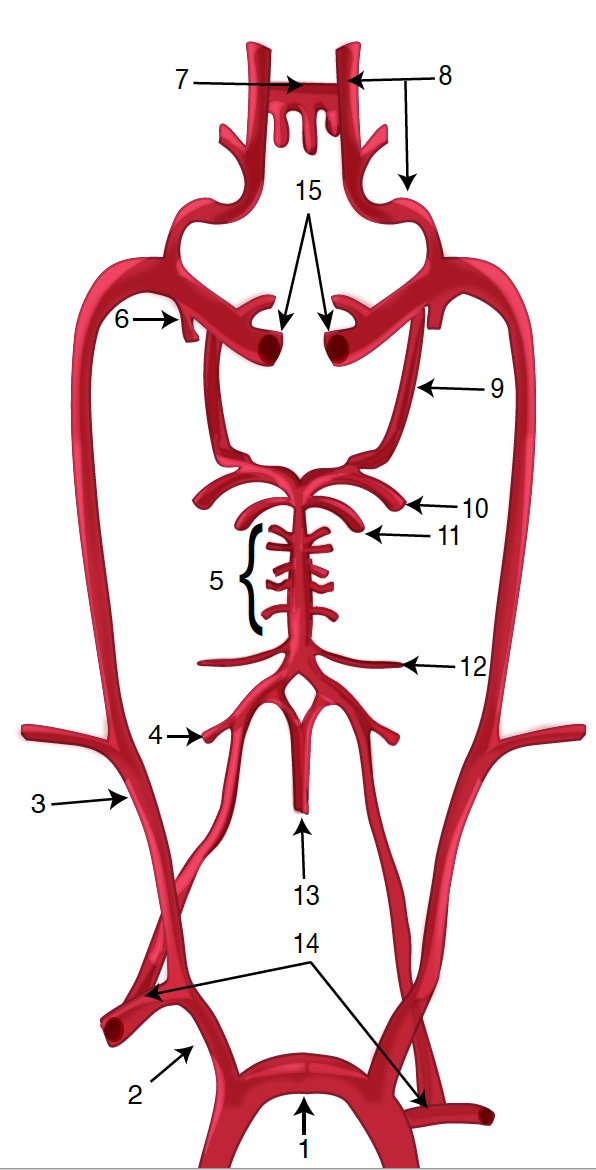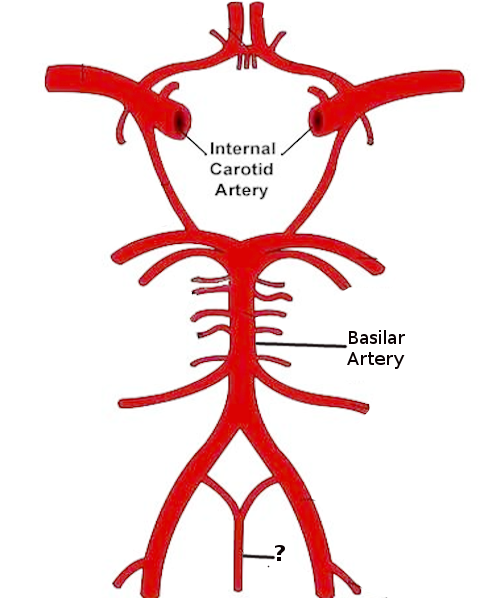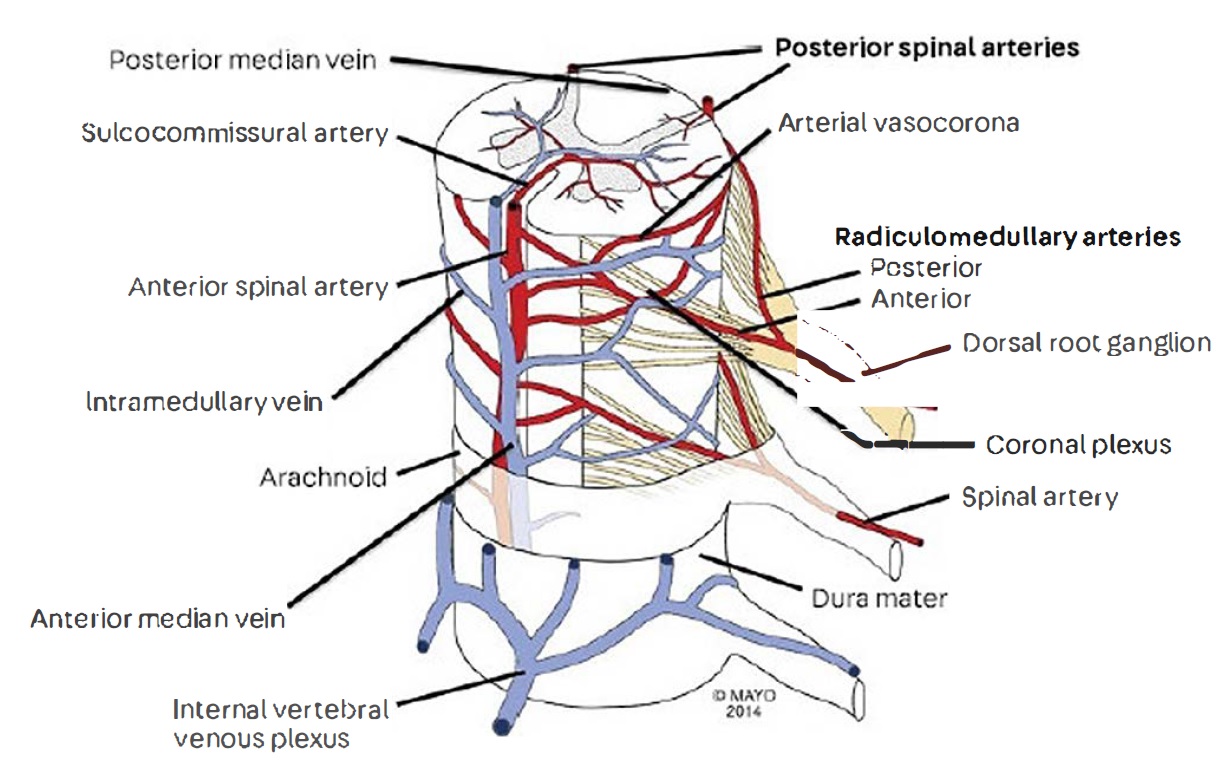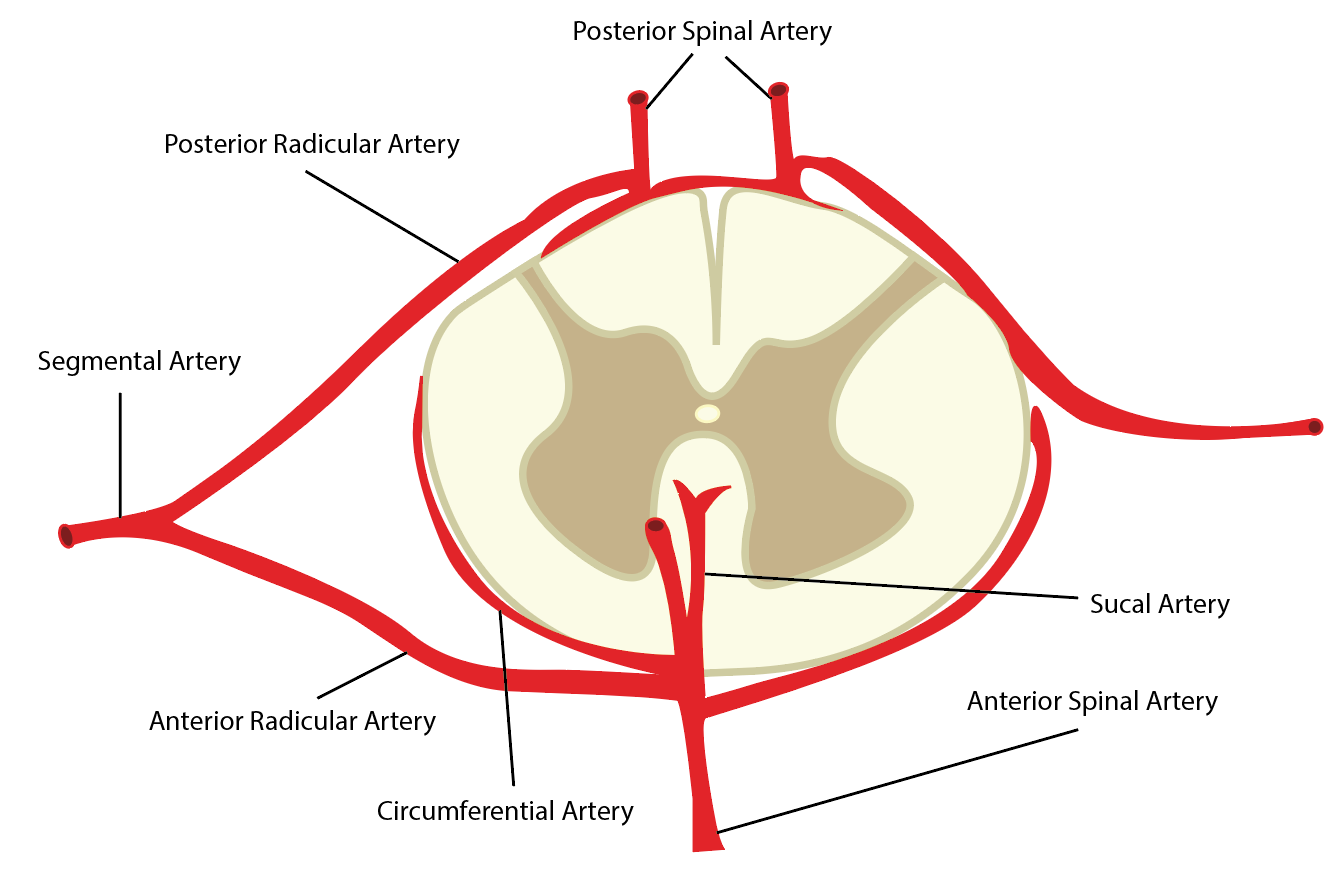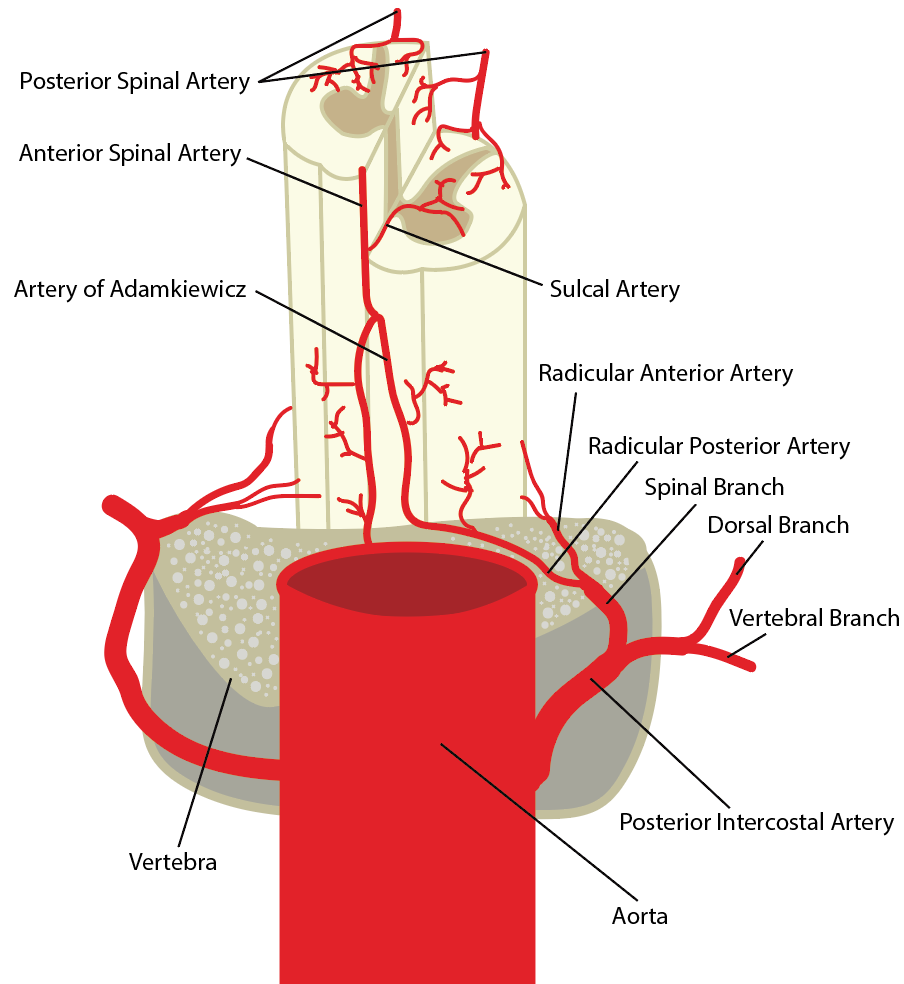[3]
Källén K, Mastroiacovo P, Castilla EE, Robert E, Källén B. VATER non-random association of congenital malformations: study based on data from four malformation registers. American journal of medical genetics. 2001 Jun 1:101(1):26-32
[PubMed PMID: 11343333]
[4]
Moon BJ,Choi KH,Shin DA,Yi S,Kim KN,Yoon DH,Ha Y, Anatomical variations of vertebral artery and C2 isthmus in atlanto-axial fusion: Consecutive surgical 100 cases. Journal of clinical neuroscience : official journal of the Neurosurgical Society of Australasia. 2018 Jul;
[PubMed PMID: 29724649]
Level 3 (low-level) evidence
[5]
Wang MX, Smith G, Albayram M. Spinal cord watershed infarction: Novel findings on magnetic resonance imaging. Clinical imaging. 2019 May-Jun:55():71-75. doi: 10.1016/j.clinimag.2019.01.023. Epub 2019 Jan 31
[PubMed PMID: 30763904]
[6]
Awad H, Ramadan ME, El Sayed HF, Tolpin DA, Tili E, Collard CD. Spinal cord injury after thoracic endovascular aortic aneurysm repair. Canadian journal of anaesthesia = Journal canadien d'anesthesie. 2017 Dec:64(12):1218-1235. doi: 10.1007/s12630-017-0974-1. Epub 2017 Oct 10
[PubMed PMID: 29019146]
[7]
Chakravorty BG, Arterial supply of the cervical spinal cord and its relation to the cervical myelopathy in spondylosis. Annals of the Royal College of Surgeons of England. 1969 Oct;
[PubMed PMID: 4980920]
[8]
Muradov JM, Ewan EE, Hagg T. Dorsal column sensory axons degenerate due to impaired microvascular perfusion after spinal cord injury in rats. Experimental neurology. 2013 Nov:249():59-73. doi: 10.1016/j.expneurol.2013.08.009. Epub 2013 Aug 23
[PubMed PMID: 23978615]
[9]
Martirosyan NL, Feuerstein JS, Theodore N, Cavalcanti DD, Spetzler RF, Preul MC. Blood supply and vascular reactivity of the spinal cord under normal and pathological conditions. Journal of neurosurgery. Spine. 2011 Sep:15(3):238-51. doi: 10.3171/2011.4.SPINE10543. Epub 2011 Jun 10
[PubMed PMID: 21663407]

